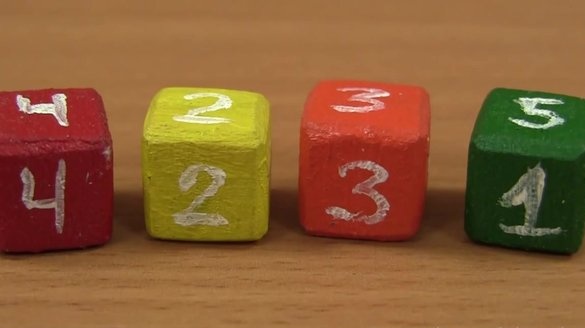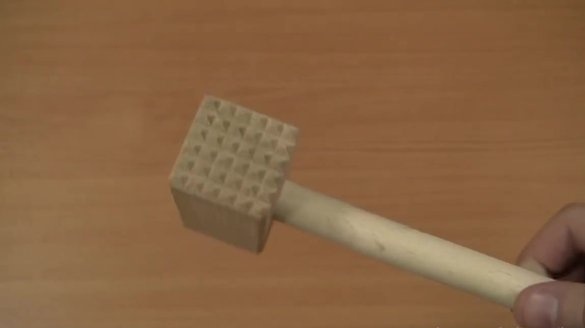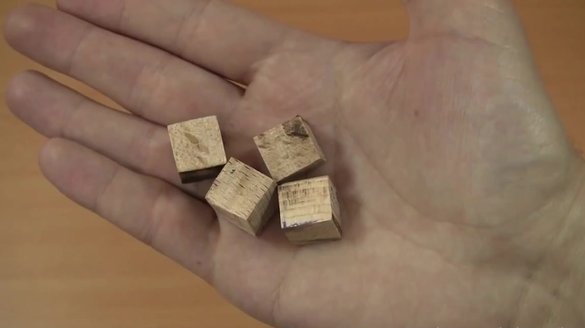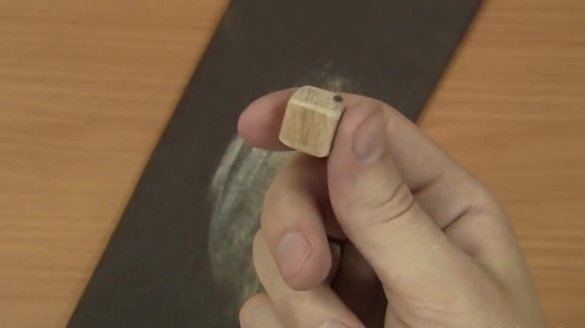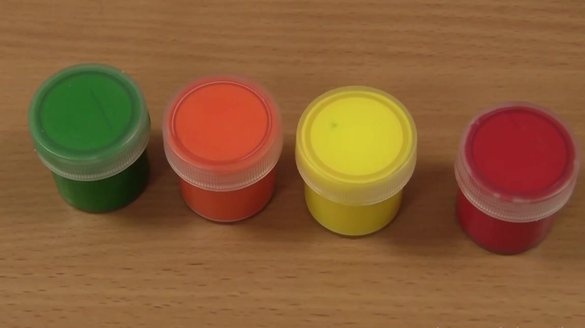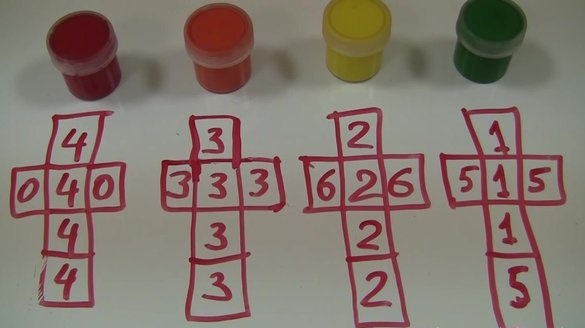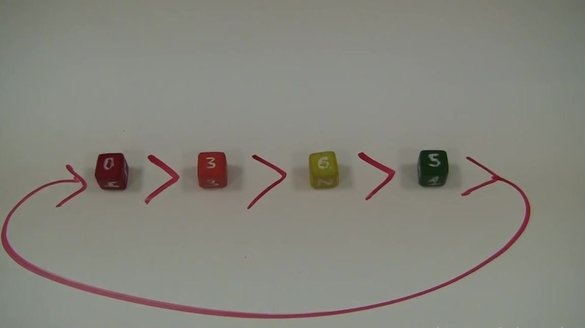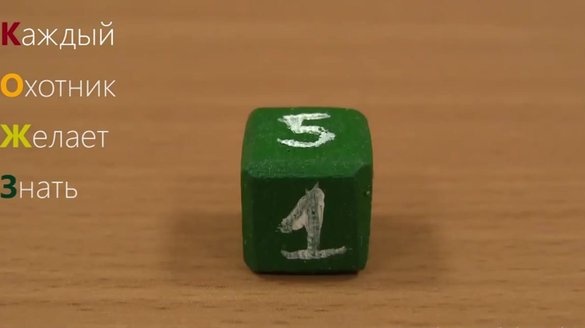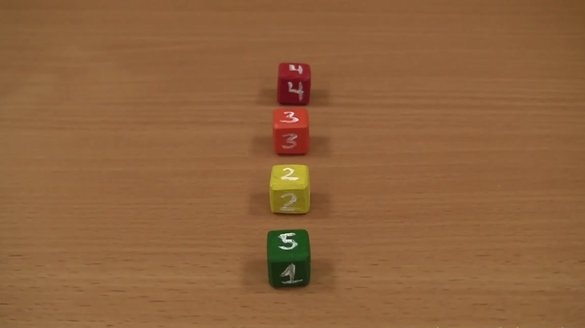Bradley Efron, a statistician from the United States, came up with a set of dice that had paradoxical properties. All cubes of this set are identical in shape and weight. Their only difference is in the numbers that are plotted on their verge. The numbers are selected so that when throwing, the numbers on the red cube fall out more than on the orange, on orange - more than on yellow, and on yellow - more than on green. Finally, green more often shows a number greater than red, that is, the first. Today we will look at how you can make these miracle cubes in home conditions.
So let's see the video homemade, and then try to repeat:
Efron's cubes can be made of wood, plastic and stone. We know how to make plastic at home from previous material. You can use this method, make plastic and make plastic cubes, however today we will make wooden.
To do this, take the most common cutting hammer and cut it into cubes with faces of one and a half centimeters.
Next, take a file or sandpaper to slightly round the corners, giving the cubes the final shape.
The next thing we need to color the cubes and put numbers on them. It is necessary to paint the cubes in different colors in order to know which is better to choose to ensure victory. And for staining, you can use ordinary acrylic paints, since they are resistant to abrasion.
Drawing numbers on cubes is the most important point in the process of their manufacture. To simplify the process, a special table is presented below, which will tell you which numbers to apply on each cube, respectively.
It should be noted that the winning sequence of dice is easy to remember thanks to the selected colors. It is enough to recall the sequence of rainbow colors or say the famous phrase “Every Hunter Wants to Know” to himself how everything falls into place.
I would also like to draw attention to the rules of the game with these dice. Each player selects a die and rolls it exactly five times. The winner is the one who scores the most points after a series of shots.

